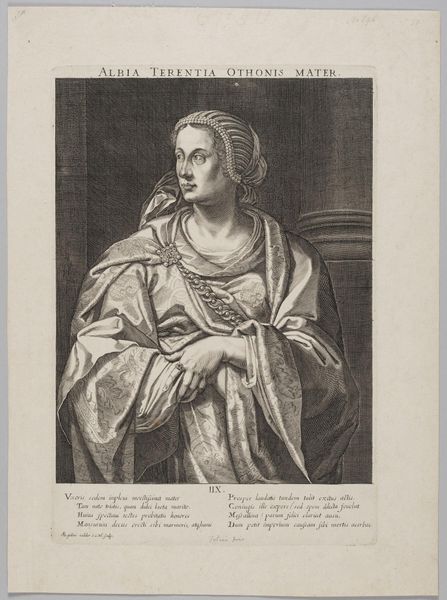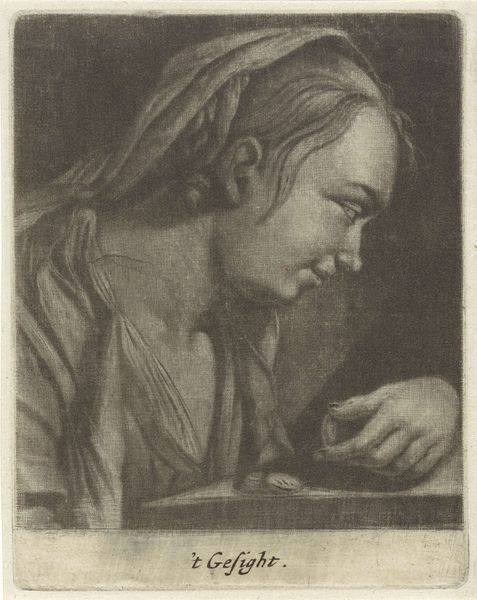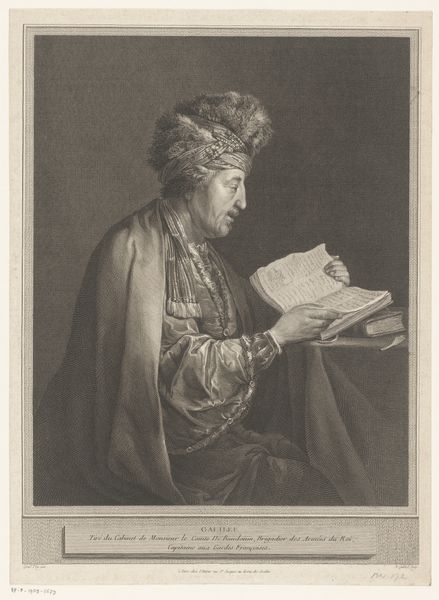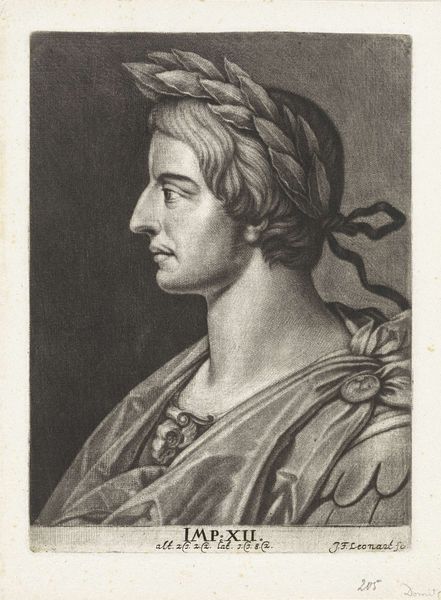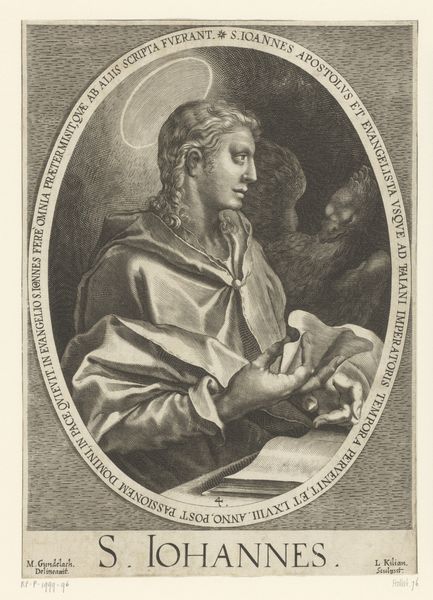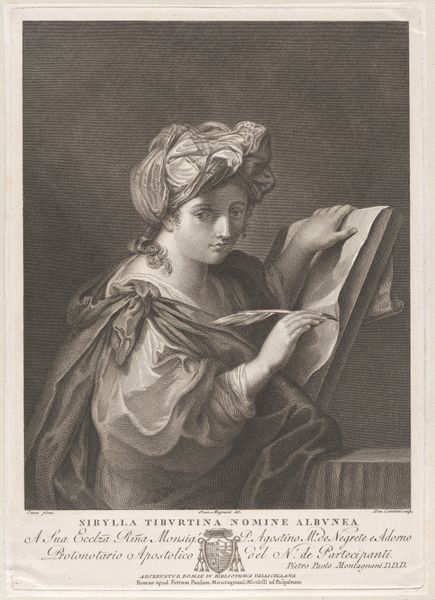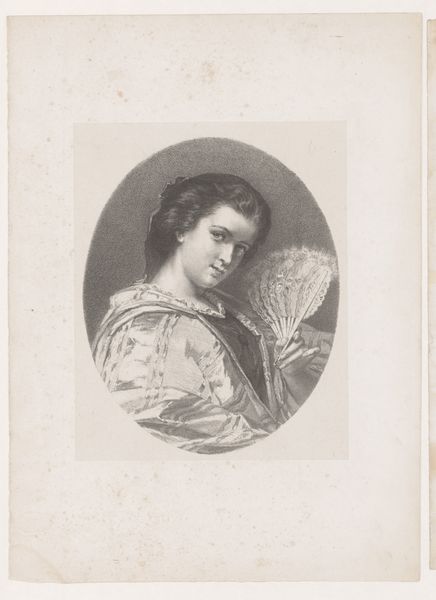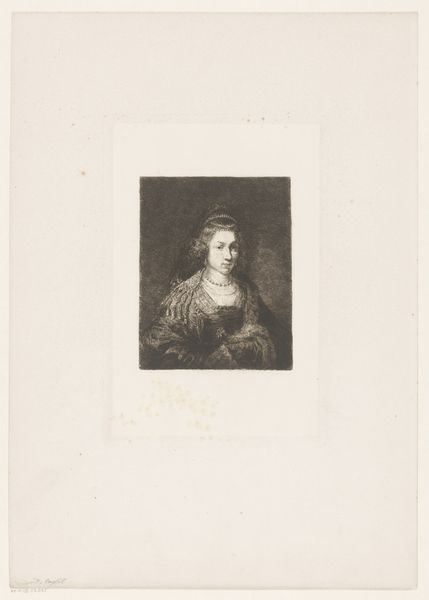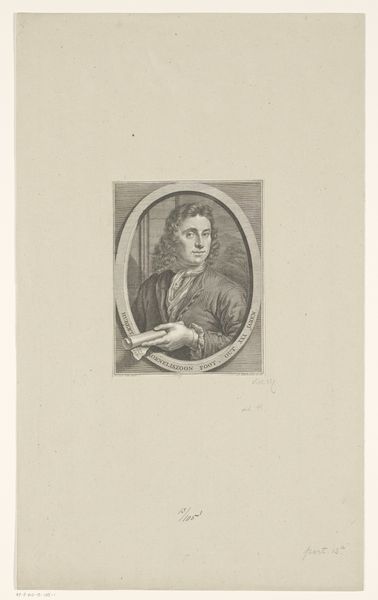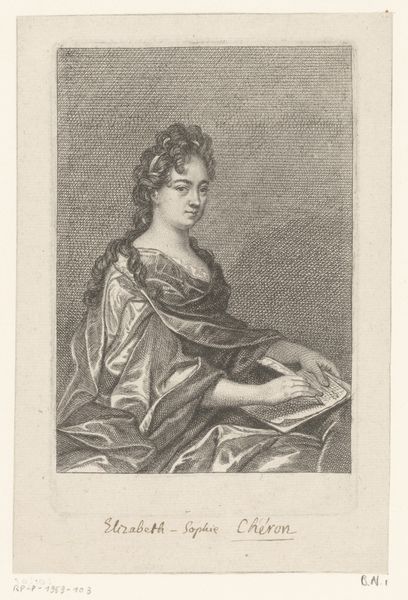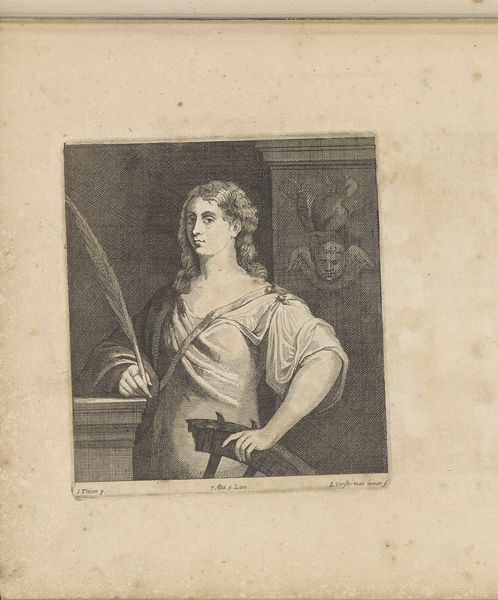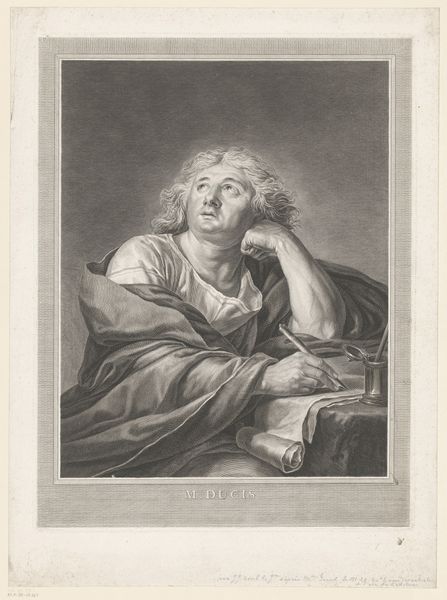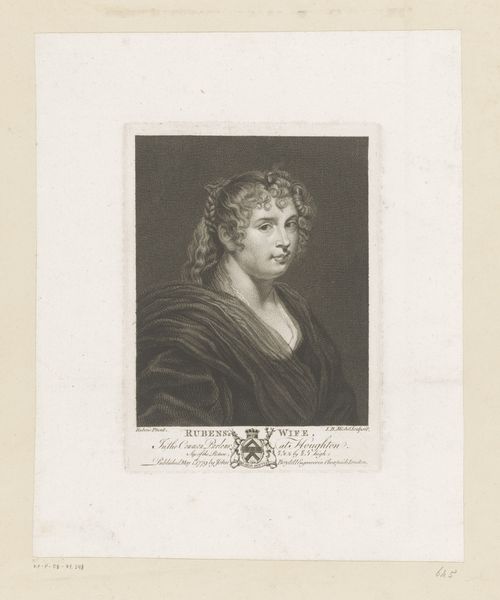
Portrait of Isabella Brant, Rubens' first wife 1799 - 1810
0:00
0:00
drawing, print
#
portrait
#
drawing
#
neoclacissism
# print
#
landscape
#
caricature
#
romanticism
#
history-painting
#
academic-art
Dimensions: Plate: 19 13/16 × 11 5/16 in. (50.3 × 28.7 cm) Sheet: 21 5/16 × 14 1/8 in. (54.2 × 35.9 cm)
Copyright: Public Domain
Curator: Ah, here we have "Portrait of Isabella Brant, Rubens' first wife" by Andreas Ludwig Bissel. Executed sometime between 1799 and 1810, it's a print. Looking at it now, it seems remarkably modern, given its age. Editor: Modern, huh? I find it incredibly intimate. The way she's looking down at the book… it's as if we're intruding on a very private moment. A quiet world made of ink and paper. I want to know what she's reading! Curator: Intrusion is part of the nature of portraits, isn't it? Especially posthumous ones like this, given that Isabella died in 1626. Bissel wasn't working from life. Editor: Oh, right, she passed away way before this print was made! That explains why there is this sense of longing. A record of beauty slipping into the realm of memory. Do you see it too? The romantic idealization… or am I projecting? Curator: Romanticism, absolutely! Look at how he softens the features, playing with light and shadow to create an aura of gentle melancholy. There's a tension here, actually, a tug-of-war between Neoclassical precision in the lines and Romantic sentimentality in the overall effect. It feels timeless because the subject's interiority dominates, like Vermeer’s paintings. Editor: Absolutely. Timeless… but also intensely human. A bookworm like us all. Do you know if she was a learned woman, or is the book a prop? Curator: Rubens was deeply cultured. We may assume that Isabella, sharing his life, likely shared some of his intellectual interests. Then again, artists, and particularly portrait artists, also know how to carefully create a specific atmosphere and portray it accordingly. Here, it emphasizes virtue and refinement, ideals that resonate within Neoclassical and Romantic portraiture. Editor: And succeeds brilliantly. You feel a sense of loss even without knowing any details about the portrayed figure, like a memento mori that resonates through centuries. It is also interesting how print manages to suggest skin tonality, or a silky gown. Curator: Yes, printmaking can be magic like that. Bissel's skill captures more than just Isabella's likeness. It shows us the enduring power of art to transcend time, to preserve not just an image, but a feeling. It is not an accidental occurrence that it's kept in the Met's halls even if Bissel is quite obscure. Editor: Well, I’m thankful he immortalized that fleeting moment. A little piece of history, and a glimpse into the heart.
Comments
No comments
Be the first to comment and join the conversation on the ultimate creative platform.

